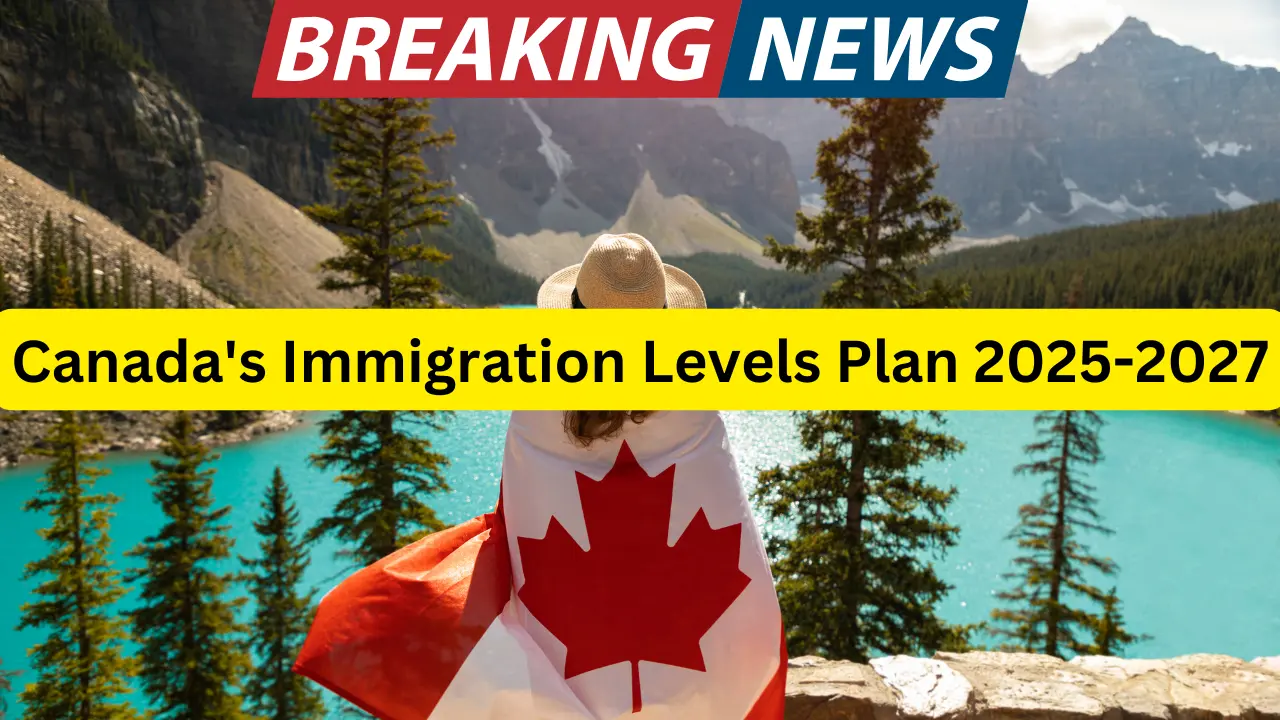A pivotal strategy that will shape Canada’s demographics and workforce over the next three years is the Immigration Levels Plan for 2025-2027. Canada remains committed to welcoming students, refugees, and skilled professionals from across the globe, adjusting its policies to ensure sustainable economic and social growth.
The new plan incorporates evolving economic realities, regional workforce demands, and a balanced approach to temporary and permanent immigration. Read on to explore the upcoming changes, their impact on temporary and permanent workers, eligibility criteria, and application processes.
Canada Announces Immigration Levels Plan 2025-2027 Overview
The Immigration Levels Plan 2025-2027 focuses on multiple categories of immigrants, including economic class workers, family reunification, refugees, and humanitarian cases.
| Policy Framework | Details |
| Department | Immigration, Refugees, and Citizenship Canada (IRCC) |
| Country | Canada |
| Category | Canada Government Aid |
The plan aims to balance economic needs while ensuring sustainable population growth. Notable changes include prioritizing in-Canada applicants, reducing temporary resident volumes, and emphasizing economic-class immigration to address workforce shortages.
| Key Focus Areas | Details |
| Economic Class Workers | Prioritizing skilled professionals to address workforce shortages. |
| Family Reunification | Emphasizing programs to reunite families in Canada. |
| Refugees & Humanitarian Cases | Continuing Canada’s commitment to resettle the world’s most vulnerable. |
| In-Canada Applicants | More than 40% of permanent residents in 2025 will be selected from those already in Canada. |
| Temporary Resident Reduction | Targets aim to decrease temporary residents to 5% of the total population by 2026. |
| Economic-Class Immigration | By 2027, approximately 62% of permanent residents will be selected from economic-class programs. |
| Workforce Shortages | Emphasis on key sectors such as healthcare, trades, and technology. |
Major Changes in the Immigration Levels Plan 2025-2027
1. Permanent Residency Targets
- Permanent resident admissions will decrease by 105,000 in 2025 compared to previous projections.
- 62% of total admissions will be allocated to the economic class, with a focus on healthcare, trades, and other in-demand occupations.
- 40% of permanent residents in 2025 will transition from temporary status.
- The Provincial Nominee Program (PNP) will receive increased funding, granting provinces greater flexibility in selecting immigrants based on economic needs.
- Francophone immigration outside Quebec will see a gradual increase to 10% by 2027.

2. Temporary Residency Adjustments
- Temporary residents will be capped at 5% of Canada’s total population by the end of 2026.
- A 10% reduction in international student permits is set for 2025.
- The Post-Graduation Work Permit Program (PGWPP) eligibility criteria will be tightened.
- Employers hiring temporary foreign workers under the low-wage stream will face a 10% cap.
- Wage thresholds for high-wage stream temporary foreign workers will increase by 20%.
- Work permits for spouses of temporary residents will be more restrictive.
3. Refugee and Asylum Reforms
- Canada remains committed to protecting vulnerable groups, including LGBTQI+ refugees, human rights defenders, and persecuted minorities.
- A partial visa requirement for Mexican nationals has been implemented to manage asylum claims.
- IRCC is improving asylum claim processing while maintaining fairness and integrity.
Economic Class Immigration and Workforce Implications
Canada’s strategy emphasizes transitioning temporary workers into permanent residents to address labor market needs. The Express Entry system remains the primary pathway, with continued focus on high-demand sectors such as healthcare, IT, and engineering.
Economic-class candidates are assessed based on the Comprehensive Ranking System (CRS), which prioritizes individuals based on age, education, work experience, and language proficiency.
The Provincial Nominee Program (PNP) will receive greater autonomy to nominate skilled immigrants based on local labor shortages.
Application Process for Temporary and Permanent Residency
Temporary Residency:
- Secure a valid job offer from a Canadian employer.
- Obtain a Labour Market Impact Assessment (LMIA) (if required).
- Apply for a work permit through Immigration, Refugees, and Citizenship Canada (IRCC).
- Upon approval, receive a work permit allowing temporary employment in Canada.
Permanent Residency:
- Create an Express Entry profile and receive a CRS score.
- If selected, receive an Invitation to Apply (ITA) for permanent residency.
- Submit required documents, including proof of language proficiency, work experience, and education.
- Await IRCC’s decision; upon approval, gain permanent residency.
Tips for Applicants: How to Improve Your Chances
- Boost CRS Scores: Improve language proficiency, pursue further education, and gain Canadian work experience.
- Explore Provincial Nominee Programs: Each province has specific criteria, increasing selection chances.
- Stay Updated: Regularly check IRCC updates and consult immigration professionals.
Future Outlook and Impact
The 2025-2027 Immigration Levels Plan aims to strike a balance between economic growth and sustainable population management. Key anticipated impacts include:
- A 0.2% population decline in 2025 and 2026 before returning to 0.8% growth in 2027.
- An estimated reduction of 670,000 housing supply gaps by 2027.
- A stronger labor market, enhanced job security, and improved housing affordability.
Conclusion
Canada’s Immigration Levels Plan for 2025-2027 reflects a strategic shift toward sustainable immigration, workforce development, and economic growth. By prioritizing in-Canada applicants and streamlining pathways for skilled workers, the plan ensures a balanced and forward-thinking approach to immigration.
| Homepage | uhmychart.org |
Whether you are a skilled worker, student, or entrepreneur, Canada continues to offer numerous opportunities. Stay informed, plan strategically, and make the most of Canada’s evolving immigration landscape.
FAQs About Canada’s Immigration Levels Plan 2025-2027
1. Who is eligible for Canada’s Express Entry system?
Individuals with skills, education, work experience, and language proficiency are eligible. Candidates are ranked based on their CRS score.
2. Can temporary workers transition to permanent residency?
Yes, many temporary workers can become permanent residents through Express Entry or Provincial Nominee Programs (PNP).
3. What are the most in-demand jobs under the new plan?
Healthcare, IT, trades, engineering, and agriculture remain top priority sectors.
4. How long does a work permit application take?
Processing times vary by country and application type but generally range from weeks to several months.
5. What is the Provincial Nominee Program (PNP)?
The PNP allows provinces to nominate skilled workers for permanent residency based on local labor market needs.






